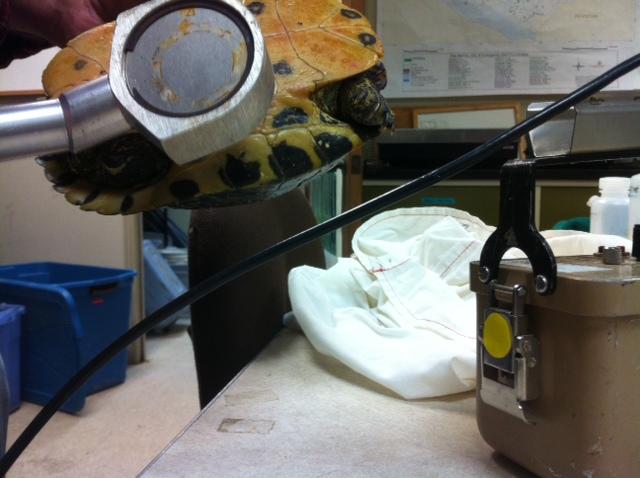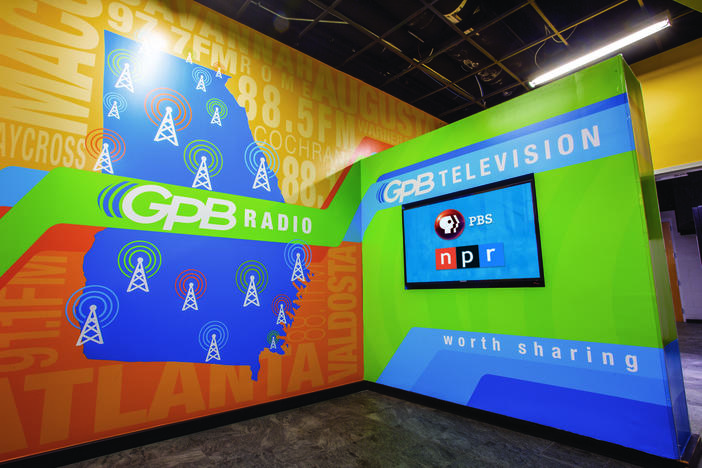
Section Branding
Header Content
Researchers Use Wildlife To Track Radioactive Clean-Up
Primary Content

Inside an austere laboratory at the Savannah River Site, ecologist Whit Gibbons runs a handheld Geiger counter over a large Slider Turtle.
He's looking for radiation. This turtle is clean. But Gibbons says that's not always the case.
"Most of the areas aren't radioactive but we identified a few hotspots on the site and sure enough then we'll track the turtles back to the point where, here's the radioactive contaminants in the water, in seepage basins for instance."
Those seepage basins are pits that have been holding nuclear waste since the 1950s. Radioactive materials and heavy metals sometimes leak from the basins. That contaminates the surrounding water and soil. So, the thousands of wild animals that roam the 300 square mile site are vulnerable to contamination.
Gibbons and his colleagues at the University of Georgia's Savannah River Ecology Lab now scour the land for radioactive turtles.
"We have been, with the support of the Department of Energy, monitoring every turtle we catch and, at this point, we have caught well over 10,000 turtles on the Savannah River Site."
The goal is to gauge how well the government's clean up effort at SRS is going. Gibbons says 180 turtles have shown signs of radiation above the levels people are exposed to every day. And turtles aren't the only creatures being tested.
Stacy Lance studies the long term effects of contamination on alligators at the Savannah River Site.
"Alligators are great for this because they live a really long time: 40 to 70 years. So a lot of these animals have been exposed to contaminants their entire life."
Like the turtles, the gators are captured, marked, tested and then released. Lance says if a radioactive animal is caught in an area thought to be free of contamination it's a sign more clean-up work is needed.
Another part of the Ecology Lab's mission is making sure contaminants don't get carried off the site by animals that can be eaten by humans like ducks.
"Because they can fly further and faster. They can land and get contaminated in a radioactive seepage basin, a lot of which have now been covered up but there are still radioactive contaminated aquatic habitats."
Researcher I. Lehr Brisbin says he hasn't found any contaminated ducks at SRS. But he says migratory birds can spread radiation across long distances. Most troubling, he says, is the prospect of birds traveling over Japan's Fukushima nuclear plant, which is leaking radiation into the air.
"If they then go through this plume, or very contaminated area in Japan, then that has great implications for the people who may eat them next summer in Alaska."
Brisbin is now trying to find ways his research at SRS can help in Japan.
And so is Stacy Lance. She is part of a new international think-tank created to answer the many questions arising from Japan's nuclear crisis.
"We can't get rid of energy we have to have energy everywhere but it's just making sure that we know what the impacts are and that we're doing everything we can to minimize those impacts."
Lance says the trouble in Japan and the research at SRS highlight the importance of understanding atomic energy's impact on the planet and all its inhabitants.
Tags: Department of Energy, Savannah River Site, Savannah River Ecology Lab, SRS, radioactive contamination, SREL, Whit Gibbons, Stacy Lance, I. Lehr Brisbin, turtles, alligators, ducks, radioactive clean-up
